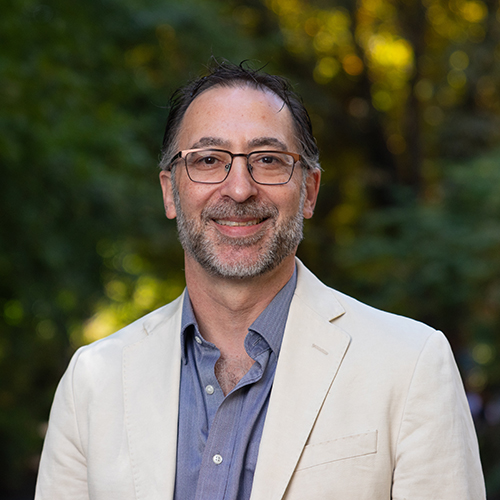As a graduate student studying Asian literature, Chris Hamm envisioned a career studying Buddhist texts. Instead he has spent the past 15 years studying popular martial arts fiction from China.
“When I was a student, I was reading this popular fiction on the side,” explains Hamm, assistant professor in the Department of Asian Languages and Literature. “I became increasingly interested in it as literature and as a phenomenon. It is what everybody reads in Taiwan and China, yet it has been almost entirely ignored as an area of study.”

Hamm describes martial arts novels as a combination of adventure and romance set in a mythical China of the past. The novels, he says, bear little resemblance to martial arts films. "Instead, think of a blend of Lord of the Rings fantasy—epic in scope, with strange beings—and the classic Western, with its mythification of national history. The novels take a fantasy of a certain period of the collective historical imagination and make it into a world of its own.”
In Chinese literature, there are tales of heroic swordsmen dating as far back as 200 B.C.E. In the Tang Dynasty (618-907 C.E.), a genre of short fiction often included tales of swordsmen. Modern martial arts novels, intended to evoke these earlier traditions, are in fact markedly different. “The language, the narrative structure, and the themes are all different than what came before,” says Hamm. “This is mass entertainment literature, and it uses mass entertainment approaches such as cliffhangers and emotional crises that modern readers find sympathetic.”
Hamm recently completed a book about martial arts fiction—Paper Swordsmen: Jin Yong and the Modern Chinese Martial Arts Novel—that focuses on renowned martial arts novelist Jin Yong. “He’s the first name anyone ever mentions when talking about martial arts literature,” explains Hamm, “and he’s the best writer in the genre, elevating it to something more than pulp fiction.”
Jin Yong’s career has been as colorful as his novels. He began as a journalist in post-war Hong Kong and made his name as a publisher during the Cultural Revolution. He was a champion of the post-Cultural Revolution regime, believing that it was committed to making China more open. When Hong Kong reverted to Chinese sovereignty, he served as a key spokes-person.
Though Jin’s life story is fascinating, Hamm’s focus is his literary career, against the background of a certain amount of political and social history. “You can trace certain thematic developments from his earliest works to his later works and see parallels with the political situation and his changing viewpoint,” says Hamm.
Jin began writing fiction in 1954, preparing serialized martial arts novels for his newspaper. Each day a new installment would be published, encouraging people to buy the newspaper. “Serialized novels were common at the time,” says Hamm, “but what Jin did, which no one before him had done, was to later rework and rewrite the novels and republish them. He made the language more refined and fluid, removed inconsistencies in the plot, and crafted the novels into higher quality literature. He tried to deepen the stories’ engagement with history or political or social questions.”
As part of his research, Hamm read the complete revised edition of Jin Yong’s novels, totaling 36 volumes, and compared much of the text with the original newspaper versions. Going back to those newspapers “really gave me a sense of what the serialized columns might have meant to readers,” says Hamm, “because I could also see what the front page story was that day.”
Reading martial arts novels all day might seem like a plum project for a scholar, but as the project wore on, Hamm learned otherwise. Each of Jin’s novels is about 2,000 pages long—and that’s in Chinese, which is more concise than English. Hamm figures the novels would run to 3,000 or 4,000 pages if translated into English.
“Colleagues joke that I was brilliant to pick a research topic where I get to read all these popular novels,” says Hamm. “But I point out to them that these things are 2,000 pages long. If you’re studying Tang Dynasty poetry, you’re done in eight lines.”
Despite his years of immersion in martial arts literature, Hamm’s fascination with the genre has not waned. His current research focuses on another martial arts novelist, Xiang Kairan, often described as the father of the martial arts genre. “He’s a different kind of writer than Jin Yong, with much more ragged edges,” says Hamm. “Reading his work, it’s clear that the genre had not yet coalesced.”
Does Hamm think he’ll tire of reading martial arts literature? “There is always the point where it becomes work,” he admits, “but mostly it’s still fun for me. I enjoyed reading these books as a graduate student, and I still enjoy reading them. I feel lucky to be able to do this.”
More Stories

Need a break from holiday movies? Try these
For those wanting a break from holiday movies, Cinema & Media Studies faculty and grad students offer suggestions.

The Public Impact of Private Cities
Geography major Edwin Bai has researched private cities, developed by individuals and corporations, that "take the libertarian idea of low government regulation to the maximum."

The Curious Journey of Chinese Characters
Several Asian countries adapted the Chinese writing system—the oldest writing system still in use—for their own languages. In a new book, Professor Zev Handel shares how that happened.